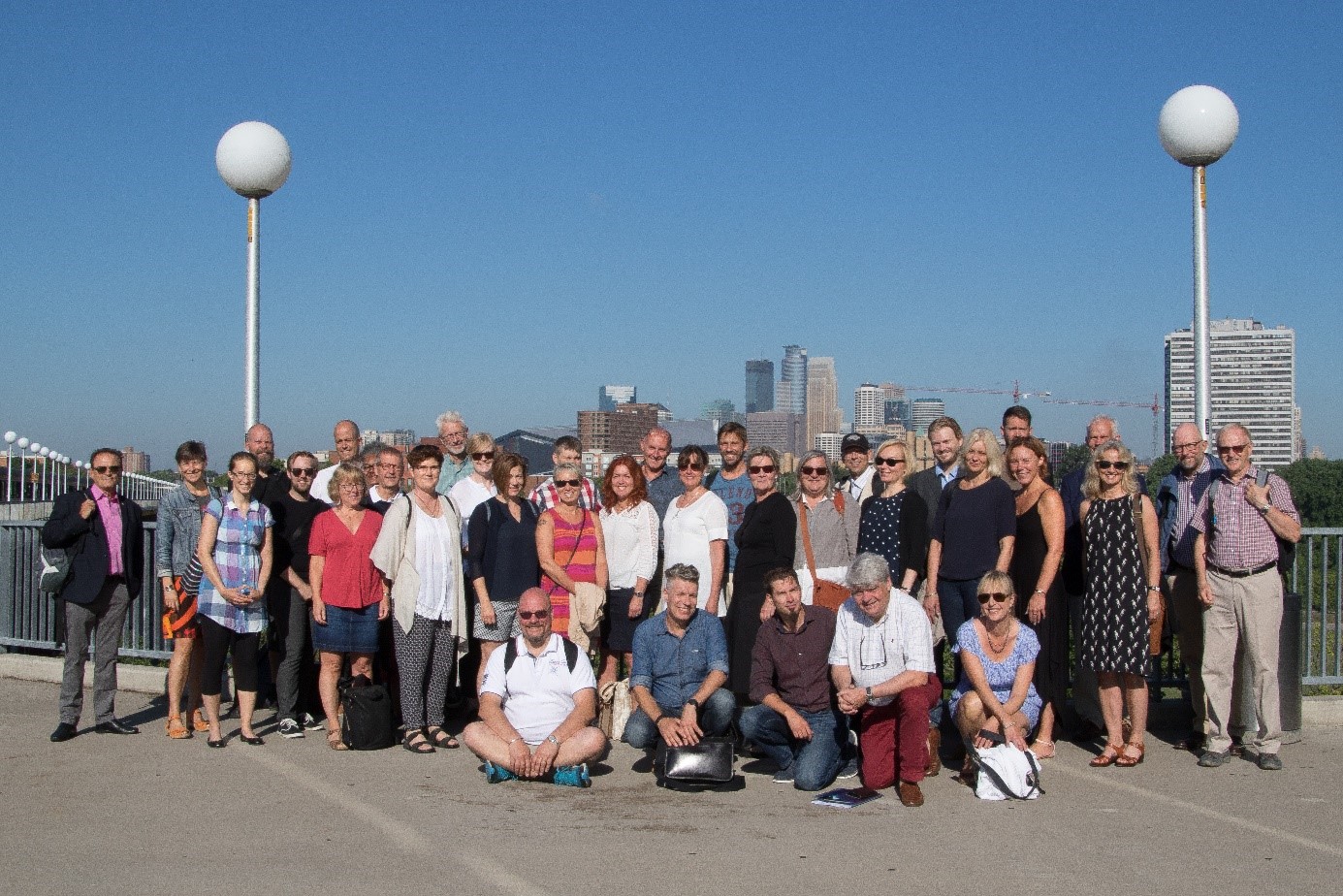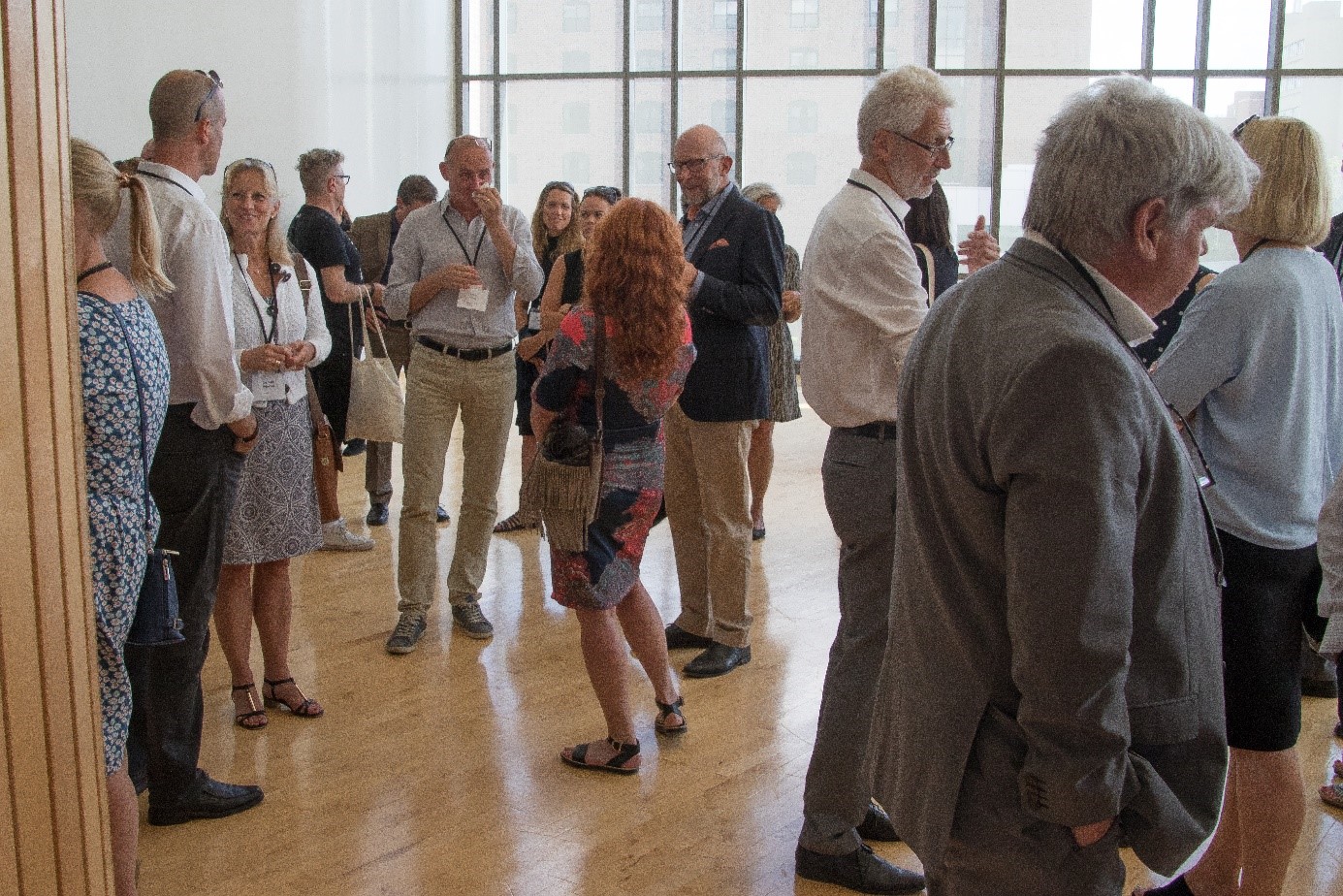A Large Contingent from Scandinavia at IFALC 2017 in Minnesota

A large group of 45 people from the network "Rum för lärande” (“Room for Learning"), representing 14 universities, and Akademiska Hus, participated in the International Forum on Active Learning Classrooms (IFALC 2017) in Minnesota, USA in August 2017. As with previous visits to the conferences in 2013 and 2015, the network also arranged a two day long pre-conference, with its own program, in close collaboration with the University of Minnesota.
On Monday, the group received a presentation of Bruininks Hall, a faculty-wide building for teaching and student services with, among other things, a large number of active learning classrooms (ALCs) containing from 45 to 171 seats. In the afternoon, the Scandinavian group borrowed a separate ALC where Marie, Michael and Pontus from Malmö University had prepared a small program to illustrate the possibilities of using an ALC.
On Tuesday, four teachers from the University of Minnesota presented their experiences from teaching in ALCs. Shared for all four teachers was that during the first lessons, or in some cases perhaps the entire first semester, were extremely nervous. During a traditional lecture you can control both the time and the orientation of the lesson in a completely different way than when the students are working in groups. Everyone agreed that once you had gotten through the nervous, first semester, no one wanted to go back to traditional teaching. Partly because evaluations showed improved results with active learning but also because teacher-student contact was more frequent and better.
Tuesday afternoon those interested in library services went on a special, focused tour of the University of Minnesota. The tour included a visit to three libraries in the campus area and, of course, conversation and exchange of experiences with the University of Minnesota librarians.
For those who were interested, we also visited the American Swedish Institute on Tuesday. Here it was clearly demonstrated how memories of Sweden are still active in Minnesota, despite the fact that several generations have now passed since the first emigrants came to the village.
In the evening, the university had arranged a reception for all international participants at the conference.

Then the IFALC 2017 conference itself began on Wednesday and lasted through Friday. Some sessions were plenary keynotes, others were lectures were held in parallel for two groups. Most of the time devoted to Paper Sessions, where participants could choose between 5 parallel presentations.
Five of these Paper Sessions were held by members from the network. Veronica Alfredsson held two different presentations about her experiences from starting up an ALC at the Biomedical Library at Gothenburg University. Marcus Sundgren from Middle University told about experiences from a teacher's perspective of using an ALC with both students in the room and students connected via the Internet. Åse Tieva and Roger Ahlgren talked about remarkable improvements to the study results by transitioning to active learning in their courses in dietary science at Umeå University. Finally, Marie Leijon, Michael Svedemar and Pontus Källström reported on their attempts at Malmö University to develop new environments for more active learning. Pontus was, as far as I could see, the only student who participated in the conference. This speaks to Malmö’s efforts to engage students in their educational development work.
In addition to these paper sessions, I, together with Maria Sunnerstam from the University of Gothenburg and Nora MacLaren from UiT The Arctic University of Norway, informed about the Scandinavian network's access and development, and how to use the network in Göteborg and Tromsø to develop learning and teaching methods at these universities.
It is difficult to briefly summarize a week with so much information, new impressions and inspiration for the continued work at home. Since I have, on two previous occasions, attended this conference, I notice a clear shift from showing more and more evidence about how a transition to active learning has improved the study results to showing more alternative ways to support teaching with premises and IT in active learning.
One of the major authorities in the field of active learning is Adam Finkelstein of McGill University, Quebec, Canada. He has been working for a long time to develop education and support for the method. He held an inspiring lecture about how active learning is a more effective form of teaching for the students than traditional forms of education. He felt that the evidence is already so convincing that we should instead use our resources for further implementation. Since the question of accepted truths is a major part of the driving force of all research, I assume that many in the university world have views on such a statement. Measuring the impact of different teaching methods in different student groups is difficult from a strictly scientific standpoint because their can be a large number of variables. However, it is inevitable that a number of studies show that many years of study results in different subjects with traditional teaching methods have improved clearly in transition to more active learning for the students. Many indications therefore point to greater effectiveness with active learning, to express it a little more cautiously. "Learning by doing" is probably not scientifically proven either. Just a thousand years of experience.
Hans Antonsson
Chairman of the board for the network "Rum för lärande "